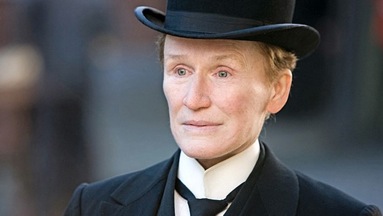This post was originally published on In Our Words.
Growing up, I was surrounded by strong and inspiring women and mothers. My Nana, my mom’s stepmom, was a divorcee with two daughters, who raised them mostly on her own before marrying my Gramps. She is also a cancer survivor who lost her arm during treatment, but continues to bike, swim, and drive. Ammie, my mom’s mom, was also a divorcee who raised my mom and uncle, taught fitness classes and, after re-marrying, seemed to emulate a perfect balance of feminine party hostess, and brainy, independent lady (she and my grandfather never merged their bank accounts, for example).
And then there’s my mom. My amazing, extraordinary, awe-inspiring momma. After a drunk driver hit my father in 1989, my mom was forced to join the ranks with other working-class single parents. She wasn’t employed at the time, and the trauma inspired by my father’s tragic car accident, coupled with horrible family feuds between his side of the family and ours, led her to months of alcohol abuse. In a bout of courage I am forever inspired by, my mom—a diagnosed alcoholic—quit drinking. Today, she’s almost 22 years sober.
She found work at nearby business’ cafeteria where she worked for several years. Eventually, she ended up getting a job in the office part of the company, working in the print shop. Like most jobs for non-college educated women, the hourly pay was not enough to live on, especially with a child. So, when I was nine years old, she took up a second job delivering newspapers in the early morning before her “real” job. Everyday she would wake up between 3:30-4am, go to the depot to assemble papers, then drive through neighboring towns, tossing some, but, for the old folks, getting out of her car to deliver the papers neatly on people’s door steps.
My entire family hoped she’d find a way to quit the paper route. Once I started working more in college, and stopped relying on her to help with rent money, I thought she might finally have enough money to work only at her office job. She was always so close to stopping, feeling almost financially secure enough to let it go.
In a devastating and cruel twist of fate, she lost her office job in the fall of 2010. The paper route became her sole income. Even when she found work as a home health-aide—something that was exciting given her decision to go to school and become certified in some sort of nursing profession—she was still unable to stop the paper route. For those of you who don’t know, being a home health care worker is one of the worst jobs you could possibly have. My mom gets no benefits, no guaranteed hours, no compensation for the gas money she uses to get to and from client’s homes, and not a penny above minimum wage. She had a steady two clients, meaning she worked 40 hours as an aide, and over an additional 20 hours doing the paper route (7 days a week). Even with this, she was not making enough money to afford to live on her own, and continued to live with my grandparents, where she’d been staying temporarily right before losing her office job.
This past September, my grandfather was diagnosed with throat cancer. Around the same time, my grandmother had several falls and was showing signs of memory loss, and increased physical instability. Even if my mom had the money to move out, it was clear she was needed at their home to help care for them. In the months following, my mom’s days were non-stop work: paper route, client #1, client #2, home to do my grandfather’s feedings (he was eating through a tube), and to provide general physical, mental, and emotional support for him and my grandmother. I don’t think my mom has slept for more than four or five hours straight in almost 20 years.
Two weeks ago, my grandfather passed away. The sadness of our loss is mitigated only by the peace we all have in knowing he is no longer suffering from the pain he experienced in his final weeks. This past weekend, I was back in Cleveland for the funeral, and got to see first-hand the way my mom functions as the backbone of our family. My mom, on top of her two jobs, managed to take care of a bulk of the funeral arrangements, and, more importantly, took care of my grandmother during one of the hardest experiences of her life.
To watch and experience the role-reversal of care-taking between mother and child is difficult, poignant, and nearly indescribable. My grandmother has always been fiercely independent, and physically capable. At first, I felt sad to see her lean on my mom—literally and figuratively—so necessarily. But that moment of sympathy for the loss of my grandmother’s former illustrations of strength was quickly replaced with an understanding that this too was an illustration of strength. My grandmother was strong enough and brave enough to say she needed my mom.
In a similar way, my mom has simultaneously had to take on more responsibility than ever, and also ask for help. Or at least allow help and care to come to her. Before my mom got her office job we were legitimately poor, but after a few years of her working we were able to afford a bit more. During my college years, my mom was always able to afford a plane ticket (or at least a bus ticket) to visit me in Chicago. After losing her job, the only way mom’s been able to visit me is if my partner and I buy her a ticket, and now, every time I’m home for a visit, I have to make sure she doesn’t try to treat us to meals out. The tables have turned, but each of these shifts has done nothing but demonstrate our resilience as mothers and daughters, caretakers and care-recipients.
And make no mistake, both giving and receiving care are equally complicated tasks. Joan Tronto notes,
Care work is devalued; care is also devalued conceptually through a connection with privacy, with emotion, and with the needy. Since our society treats public accomplishment, rationality, and autonomy as worthy qualities, care is devalued insofar as it embodies their opposites. (p. 117)
In this way, my mom displays acts of defiance on a daily basis. Intentional or not, she perseveres through the embodiment of a role that, in her professional job, is often degrading and thankless, and in her private life is understood as weak.
It is not a surprise that my mom is capable of doing this. She has always been immeasurably selfless and generous. And her heart is enormous. More than that, she does all of this without a word of complaint. Through it all, she continues to smile and sing on a daily basis. Her sense of humor is as corny as ever, and she is the proud owner of Justin Beiber toothbrush (it sings as you brush!). She is unique, and funny, and brave, and gets joy from the simple things, like walking her dog, or hearing her favorite song on the radio.
On Mother’s Day and everyday, I am thankful for her. I am proud of her, and proud for her. On Mother’s Day and everyday: I am one lucky daughter.





